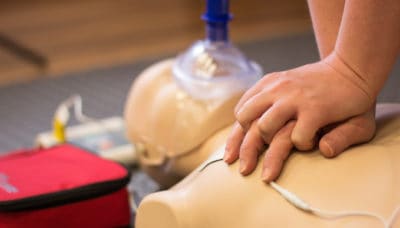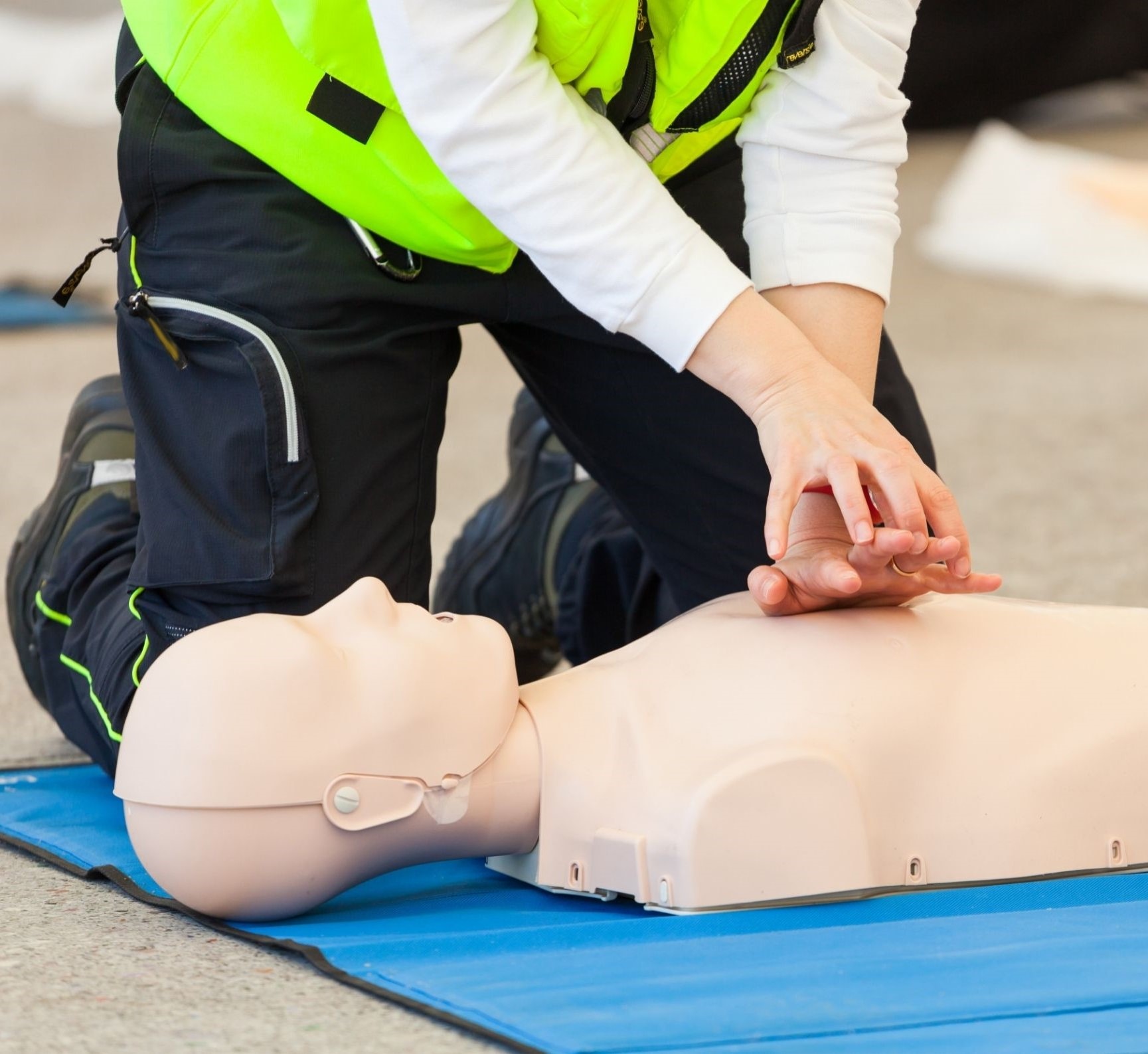Introduction
Cardiopulmonary resuscitation (CPR) is a lifesaving technique that everybody should recognize. Nonetheless, despite its vital relevance, countless misconceptions border CPR practices and accreditation. Lots of individuals might hesitate to obtain accredited due to these misunderstandings, which can ultimately set you back lives in emergency situation circumstances. This article aims to unmask common myths concerning CPR while emphasizing the significance of obtaining accredited via approved first aid courses By comprehending the facts, you can empower yourself and potentially conserve a life.
Common Mistaken beliefs About mouth-to-mouth resuscitation and Why You Need To Obtain Certified
What Is CPR? Understanding the Basics
CPR means cardiopulmonary resuscitation, a treatment created to restore breathing and circulation in an individual that has actually stopped breathing or whose heart has stopped pounding. The technique includes chest compressions incorporated with synthetic ventilation strategies such as mouth-to-mouth breathing or using a bag-mask device.
- Key Parts of CPR: Chest Compressions: These aid maintain blood flow to crucial organs. Rescue Breaths: These supply oxygen to the lungs. Automated Outside Defibrillator (AED): A tool that can shock the heart back into rhythm in situation of particular heart arrests.
Misconception 1: Just Doctor Can Execute CPR
One common misconception is that just experienced doctor can do CPR efficiently. While healthcare providers are certainly competent at it, any person can discover how to execute mouth-to-mouth resuscitation via CPR courses
- The Truth: Laypersons can be trained to provide effective CPR. Basic methods are uncomplicated and can be grasped by anybody going to learn. Bystanders typically play vital functions in saving lives prior to professional aid arrives.
Misconception 2: mouth-to-mouth resuscitation Is Just Valuable for Heart Attack Victims
Another widespread misconception is that CPR is entirely for individuals experiencing heart attack. In truth, mouth-to-mouth resuscitation can be valuable in different emergencies.
- Other Situations Where mouth-to-mouth resuscitation Serves: Drowning incidents Drug overdoses Choking targets where the respiratory tract has been compromised
Misconception 3: You Ought To Prevent Providing Rescue Breaths
Many people believe rescue breaths are unneeded or perhaps unsafe as a result of the threat of infection or various other issues. This comes from complication regarding how COVID-19 may influence these practices.
- The Facts: Rescue breaths are vital for providing oxygen. During circumstances like sinking or opioid overdose, rescue breaths come to be crucial. Hands-only mouth-to-mouth resuscitation is recommended when a person is inexperienced or hesitant but recognizing both techniques remains vital.
Misconception 4: You Can't Damage A Person by Carrying Out CPR Incorrectly
While it holds true hltaid009 CPR certification near me that performing mouth-to-mouth resuscitation inaccurately may create some harm, not trying it in any way may bring about death.
- Understanding the Risks: Rib fractures may take place throughout aggressive breast compressions. Any action taken is better than doing nothing; modern guidelines highlight that "something" is far better than "absolutely nothing" during heart attack situations.
Misconception 5: When You're Educated, You Don't Required Further Training
Some individuals Browse around this site think that as soon as they've completed a program, they don't need further training or recertification.
- Why Continuous Training Issues: Techniques develop in time based on brand-new research. Regular refresher courses keep your skills sharp and guarantee you're up-to-date with existing best practices.
Misconception 6: Kid Do Not Required CPR Training
Parents usually assume they won't need to execute mouth-to-mouth resuscitation on their kids due to the fact that children don't experience heart occasions check here as frequently as adults do.

- The Reality for Parents: Children can suffer from respiratory problems, choking events, or sinking scenarios requiring prompt attention. Learning pediatric-specific techniques guarantees preparedness during emergencies involving children.
Importance of Obtaining Licensed in First Aid and Mouth-to-mouth Resuscitation Courses
Why Certification Issues in Emergency Situation Situations
Being licensed in emergency treatment and mouth-to-mouth resuscitation supplies a number of benefits beyond just finding out life-saving abilities:
- Enhances self-confidence when facing emergencies Increases recognition of safety and security protocols Encourages more people to progression in emergency situation situations
Benefits of Taking an Emergency Treatment Course
Comprehensive Ability: Individuals find out not almost CPR but also basic first aid concepts such as wound treatment and managing fractures. Legal Security: Accreditation commonly features Good Samaritan regulations protection when aiding someone throughout an emergency. Career Opportunities: Lots of jobs call for emergency treatment qualification as part of their security procedures; being certified boosts employability in fields like mentor, training, medical care, and childcare.FAQs Regarding Typical Misconceptions Pertaining To CPR
FAQ 1: What type of training do I require for efficient CPR?
You must sign up in acknowledged CPR courses that cover both adult and child resuscitation approaches effectively.

FAQ 2: How commonly ought to I renew my emergency treatment certificate?
It's suggested to renew your first aid certificate every two years considering that standards transform regularly based on emerging research.
FAQ 3: Is hands-only compression better than standard CPR?
For untrained spectators or those unpleasant giving rescue breaths, hands-only compression works however recognizing both techniques supplies a greater chance of survival if educated properly.
FAQ 4: What sources are readily available for discovering very first aid?
Numerous organizations supply on the internet sources together with physical courses; trusted systems consist of the American Heart Organization and Red Cross sites which information first help courses readily available near you.

FAQ 5: Are there any kind of age limitations on taking an emergency treatment course?
Most first help courses welcome participants of all ages; nevertheless, some specialized courses may be tailored towards specific age (e.g., kids vs adults).
FAQ 6: Does my office need me to obtain certified?
Certain work environments-- especially those entailing public interaction-- usually require staff members to have legitimate certifications in emergency treatment and fundamental life support (BLS).
Conclusion
Understanding the fact behind typical misunderstandings about CPR is important for increasing understanding regarding this life-saving strategy. Whether you're a parent wanting to protect your child or an employee looking for accreditation for specialist innovation, getting accredited through appropriate first aid courses arms you with the knowledge needed for acting emphatically throughout emergency situations. Remember-- anyone can discover just how to execute reliable CPR despite history; do not allow misunderstandings prevent you from coming to be equipped! So why wait? Sign up today for a CPR course!
This comprehensive overview looks for not just to eliminate misconceptions surrounding CPCR yet also serves as an inspiration for everybody to seek accreditation so they also can add favorably throughout emergencies!